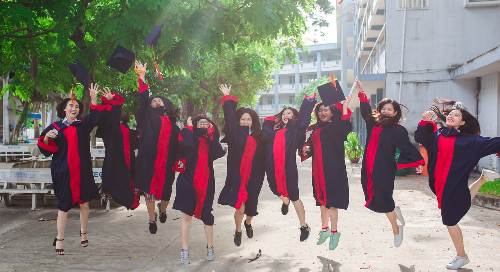an-integrative-approach-to-biochemistry-for-the-modern-student-2
November 20, 2020
“Biochemistry can’t just exist in a bubble anymore—and our enrollments are growing across the board,” says John Tansey, chemistry professor at Otterbein University in Ohio. Tansey won the “Best New Teacher” award in 2004 and has taught undergraduate courses ranging from general chemistry to advanced biochemistry. According to Tansey, “Students today are more demanding of their instructors—they want the information they need, when they need it. But they’re also more resourceful.”
How can you make the subject matter relevant to the modern student in such a way that they can connect the dots on their own? Ultimately, how can you train them to think like biochemists?
As part of Wiley’s webinar series that shines a spotlight on recent scientific developments and hot topics in the field, Tansey explores the dynamics of today’s biochemistry student. He outlines three key aspects of a successful biochemistry course: content delivery, skill building, and assessment.
Content Delivery: In his book, Biochemistry: An Integrative Approach with Expanded Topics, Tansey integrates descriptive and metabolic biochemistry in each chapter throughout the text. Whereas traditional texts cover descriptive biochemistry first and then topics like glycolysis and beta oxidation later on, Tansey integrates these concepts in the same chapter so that there’s not a long lag in the learning process. When related topics are introduced in the same chapter, students can grasp and then immediately apply them, which helps add relevancy to lesson material.
Tansey notes that this approach ensures that students get an integrative experience, which is a central part of biochemistry. Encapsulating metabolism throughout the lessons also helps students see the bigger picture and connect concepts in a more meaningful way.
Skill Building: It’s critical to help your students develop visual literacy skills, which means they can gather and analyze information from a graph, pathway, or structure. “When we depict images in certain ways, it definitely tells a story,” Tansey explains. The art in Tansey’s Biochemistry tells a cohesive story to help students engage more deeply with the material.
For example, highlighting shows what would happen if we made mutations to a certain aspect of a protein or active sites of an ATP synthase. Dynamic figures, or web-based tools, help students explore the chapter content, study, and interact with molecules and processes covered in the chapter. Drag-and-drop quizzes of a cell’s major pathways give a description and link out every enzyme to an NGL viewer so students can see and manipulate the enzyme. There’s a link there to the protein data bank where students can access the actual protein and its structure.
In addition to the art package, worked problems are found throughout the book to emphasize higher-level thinking skills. Accompanying videos show Tansey solving the problems, which resembles an interactive office hour. “This models behavior for the students,” Tansey says. “It lets them see my thought process behind the solutions.”
Assessment: End-of-chapter problems help assess student comprehension, getting them to think about biochemical topics in a more complex way. Data interpretation questions ask students to explain what they see in a figure or diagram based on what they’ve already learned in a chapter. Experimental design questions are a starting point for students to begin to characterize molecules and understand which techniques work and which ones don’t. Societal and ethical questions like “Is high fructose corn syrup good to have in your diet?” align with the type of problems students will see on the MCAT and the kind of topics professional societies will ask them to engage with.
Overall, Tansey has developed content, skill-building, and assessment that’s student-centered, accessible, and clean. The content is accompanied by a well-executed art package and biomedical focus that keeps students engaged and helps them apply what they learn in your course to the real world.
This blog is based on John Tansey’s webinar, “An Integrative Approach to Biochemistry for the Modern Student.” Click the link above to watch the webinar.
Speaker:
John Tansey
- Picture
-

- Title
- John Tansey
- Designation
- Professor of chemistry at Otterbein University
- Description
-
John Tansey is a professor of chemistry at Otterbein University, where he was awarded the “Best New Teacher” award in 2004. He has taught courses ranging from general chemistry to advanced biochemistry. John currently serves as the director of the interdisciplinary program in biochemistry and molecular biology.












